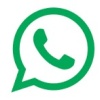STUDI KEANEKARAGAMAN JENIS VEGETASI PADA DAERAH TANGKAPAN AIR WAIBURA DESA KOBASOMA KAWASAN HUTAN LINDUNG LEWOTOBI ILEMUDA RTK. 106 KECAMATAN TITEHENA, KABUPATEN FLORES TIMUR
Abstract
The forest area in Titehena Sub-district that is highly protected is the Ilemuda Protected Forest. Ilemuda Protected Forest is one of the protected forest areas that has a high potential of forest resources that need to be preserved. However, currently there are development activities that have converted most of the forest area into agricultural land and plantations, thus affecting the diversity of vegetation types. This study aims to determine the diversity of vegetation types and regeneration status in the Waibura catchment area of Kobasoma Village, Lewotobi Ilemuda protected forest area RTK. 106 Titehena sub-district, East Flores Regency. The vegetation types of the Waibura catchment area of the Ilemuda Protected Forest area found 49 types of vegetation. At the tree level, the dominating vegetation type is walnut with an INP value of 22.36%, the dominating vegetation pole level is Tilo with an INP of 22.13%, the dominating vegetation stake level is Tilo with an INP of 17.00%, the dominating vegetation seedling level is Ipek with is 15.93%.The highest level of species diversity (H') at the tree level is 3.56%, followed by the pole level 3.45%, then the stake level 3.37%, and the lowest is obtained at the seedling level 3.32%. The regeneration status of vegetation in the Waibura spring catchment area of the Ilemuda protected forest varies. The Gari, Kajobunga, Tap, Kubak and Olak vegetation types have a "good" regeneration status. Perek vegetation type is in "fair" regeneration status. Baka, Bilo, Boja, Danga, Darat, Eheng, Foang, Halabait, Ipek, Kajuk, Kayorie, Kebahi, Kebo, Kenuna, Kukung, Kung, Lamatoro, Lekar, Maku, Nahak, Sureng, Pahi, Pao, Tebuk, Tilo, and Wu'a vegetation types are categorized as "poor" regeneration status. The vegetation types Cocoa, Caladium, Coffee, Kue, Paku, Ti'e, Tobi and Waher are included in the regeneration status of "new". The vegetation types Bamboo thorn, Bao, Bidara, Kapo, Walnut, Nuting, Palawan tree, and Tapo are included in the regeneration status of none.

 Yakobus Fernandez Lamury(1*)
Yakobus Fernandez Lamury(1*)







